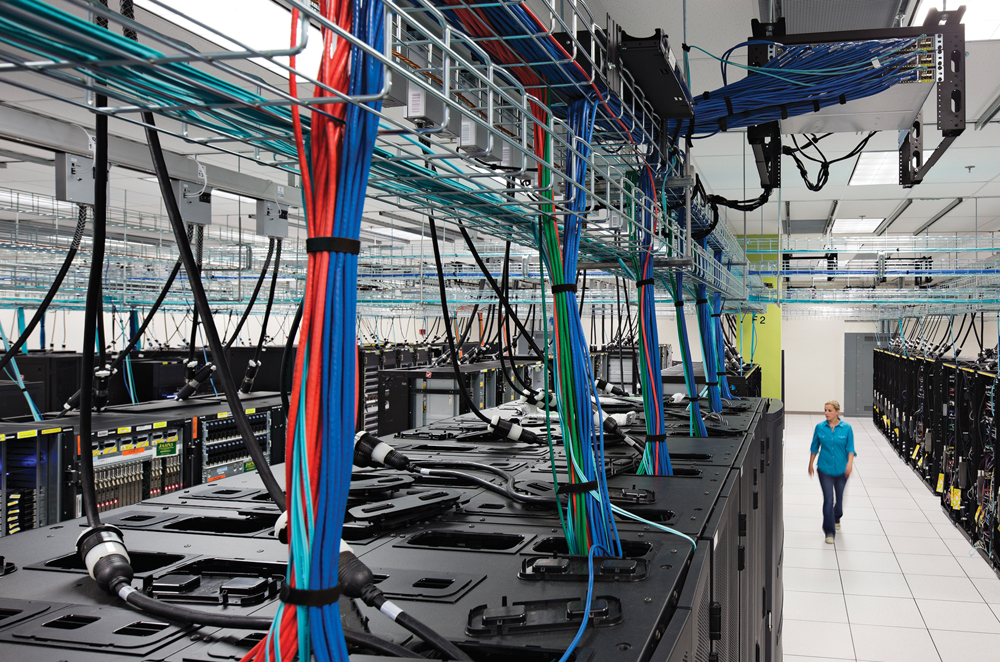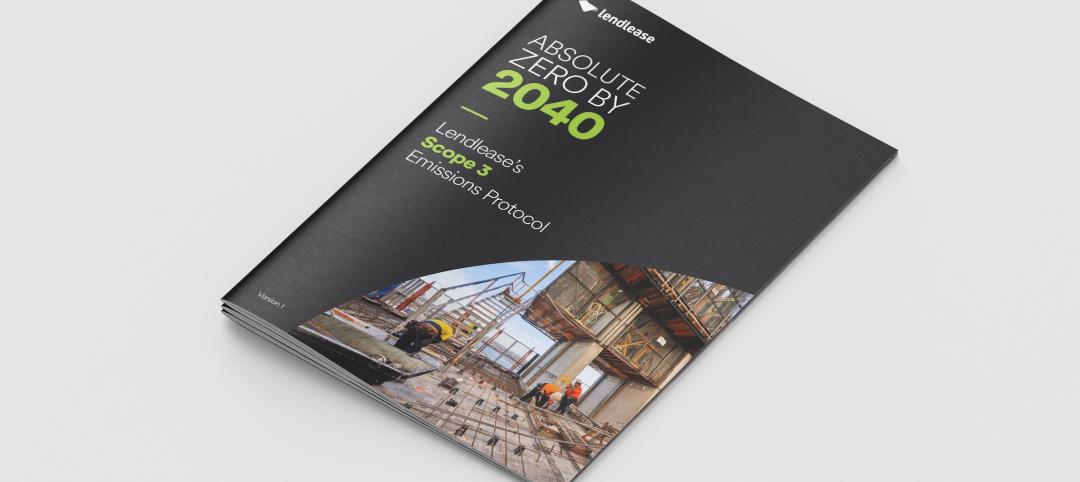While the once white-hot data center construction market has cooled off in recent years, the outlook for this sector remains quite rosy. Each year, businesses and institutions spend billions on data center construction and retrofit projects to keep up with the nation’s insatiable demand for data storage and processing.
The data center sector is conservatively estimated at $13-15 billion annually—larger than the hospitality, amusement/recreation, and water supply sectors, according to U.S. Census Bureau data. And the emergence of cloud computing and storage, combined with the “never delete anything” mindset of consumers and businesses, will only drive demand for data storage and processing.
“The data center market should generally follow the growth of Internet traffic, and Internet traffic continues to grow strongly,” says Craig Deering, AIA, LEED AP, National Practice Leader – Critical Facilities with HDR Architecture.
According to a May 2013 report from Cisco Systems, IP traffic volume in North America is expected to grow to 40 exabytes a month by 2017, a 23% cumulative annual growth rate. Cisco predicts global IP traffic will increase threefold over the next five years. Driving this steep growth are the explosion of networked devices, especially wireless gadgets, and the emergence of video as a dominant content type. Cisco predicts that traffic from wireless and mobile devices will exceed wired devices by 2016, and video will reach 69% of global consumer Internet traffic by 2017.
TOP DATA CENTER ARCHITECTURE FIRMS
2012 Data Center Revenue ($)1 Corgan $27,534,1912 Gensler $23,330,0003 HDR Architecture $16,295,0004 Integrated Design Group $14,598,9105 PageSoutherlandPage $14,450,0006 Reynolds, Smith and Hills $4,360,0007 Callison $3,973,6998 Little $3,655,5909 RTKL Associates $3,634,00010 EwingCole $3,000,000
TOP DATA CENTER ENGINEERING FIRMS
2012 Data Center Revenue ($)1 Fluor $235,678,9002 Syska Hennessy Group $36,735,4343 Jacobs Engineering Group $36,700,0004 H&A Architects & Engineers $35,427,5995 URS Corp. $26,229,0496 Environmental Systems Design $10,575,8927 Parsons Brinckerhoff $10,300,0008 H.F. Lenz $7,357,0009 Science Applications International Corp. $6,760,59810 AKF Group $6,602,000
TOP DATA CENTER CONSTRUCTION FIRMS
2012 Data Center Revenue ($)1 DPR Construction $895,882,4592 Balfour Beatty $753,194,2143 Holder Construction $710,000,0004 Turner Corporation, The $501,750,0005 Whiting-Turner Contracting Co., The $490,093,0456 Mortenson Construction $307,360,0007 Structure Tone $285,725,0008 Skanska USA $236,396,8589 Gilbane $130,362,00010 Carlson Design Construct $128,000,000
Giants 300 coverage of Data Centers brought to you by System Sensor www.systemsensor.com
What does this mean in terms of construction spending growth? If the Data Center Dynamics annual census of the industry is any indication, the data center construction market will remain one of the fastest-growing sectors in the country. According to DCD Intelligence’s most recent survey of nearly 3,800 data center owner/operators and 1,600 vendors, data center facility investment was up 23% on the Coasts and 50% in the central U.S. in 2011-12.
“Calculating the size of the data center market is challenging,” says Deering, “but no matter how you look at it, there’s no doubt that the data center market stands on its own as a distinct and meaningful sector.”
Achieving a lower cost of computing
Shrinking IT budgets and rising operational costs have led data center operators and corporate clients to scrutinize project budgets. As a result, AEC firms are being tasked with finding solutions for lowering the overall cost of computing and operating and maintaining the facilities.
This, in turn, is driving innovation in data center design, including the use of advanced cooling schemes, energy-efficient IT equipment, and higher-density environments. Advanced technologies like KyotoCooling, which utilizes heat wheels to reduce the cooling load on the building’s HVAC system, are becoming more common in U.S. data center projects. In addition, a growing number of data center operators are choosing to build new facilities in northern climates to take advantage of the cooler outdoor air temperatures.
Advancements in server technology, combined with a recent change to ASHRAE’s TC 9.9 Datacom guidelines, means that Building Teams can deliver facilities that operate at higher internal temperatures, greatly reducing cooling costs.
“The top end of the allowable range now is 80.6°F, up from 76°F previously,” says Ronald Vokoun, DBIA, LEED AP BD+C, Mission Critical Market Leader – Western Region with JE Dunn Construction. “Generally speaking, for every 1.8°F that you raise the temperature in your data center, you save 2-4% of your total energy bill. That’s a pretty high and immediate ROI.”
Rising costs are forcing many companies to outsource their data hosting through co-location and cloud services. This trend is leading to the construction of more mega-data center facilities, like CyrusOne’s new Chandler, Ariz., complex, which will eventually house more than
1 million sf of data center space. By 2015, just 2% of the world’s data centers will contain 60% of the floor space, up from 52% in 2010, according to a report from Gartner Inc.
“We will continue to see the concentration of data center floor space into a small community of dominant global players,” says HDR’s Deering.
Retrofits: A growth market
An emerging market for AEC firms is data center retrofits. The first wave of data centers—built during the dot-com boom of the late 1990s—are woefully outdated and are prime for retrofitting. Even the facilities built years later are behind the technology curve, and operators will be looking to upgrade their servers and infrastructure to meet the computing demands of today’s market.
“Many companies are looking at the ‘capex’ versus ‘opex’ dollars and realizing that they can strike a meaningful balance between the two by simply updating, retrofitting, or renovating their existing facilities,” says Jerry Sumrell, PE, Vice President, Mission Critical with RS&H. “This presents new challenges to the design industry, as we will be devoting more time to working in live data center environments with all of the associated risks that come with it. It’s akin to performing open-heart surgery—you have to keep the facility running 24/7 while adding new equipment, decommissioning existing equipment, and transferring power/cooling from one piece of equipment to another.”
Read BD+C's full Giants 300 Report
Related Stories
Luxury Residential | Oct 2, 2023
Chicago's Belden-Stratford luxury apartments gets centennial facelift
The Belden-Stratford has reopened its doors following a renovation that blends the 100-year-old building’s original architecture with modern residences.
Market Data | Oct 2, 2023
Nonresidential construction spending rises 0.4% in August 2023, led by manufacturing and public works sectors
National nonresidential construction spending increased 0.4% in August, according to an Associated Builders and Contractors analysis of data published today by the U.S. Census Bureau. On a seasonally adjusted annualized basis, nonresidential spending totaled $1.09 trillion.
Construction Costs | Sep 28, 2023
U.S. construction market moves toward building material price stabilization
The newly released Quarterly Construction Cost Insights Report for Q3 2023 from Gordian reveals material costs remain high compared to prior years, but there is a move towards price stabilization for building and construction materials after years of significant fluctuations. In this report, top industry experts from Gordian, as well as from Gilbane, McCarthy Building Companies, and DPR Construction weigh in on the overall trends seen for construction material costs, and offer innovative solutions to navigate this terrain.
Resiliency | Sep 25, 2023
National Institute of Building Sciences, Fannie Mae release roadmap for resilience
The National Institute of Building Sciences and Fannie Mae have released the Resilience Incentivization Roadmap 2.0. The document is intended to guide mitigation investment to prepare for and respond to natural disasters.
Codes and Standards | Sep 25, 2023
Lendlease launches new protocol for Scope 3 carbon reduction
Lendlease unveiled a new protocol to monitor, measure, and disclose Scope 3 carbon emissions and called on built environment industry leaders to tackle this challenge.
Data Centers | Sep 21, 2023
North American data center construction rises 25% to record high in first half of 2023, driven by growth of artificial intelligence
CBRE’s latest North American Data Center Trends Report found there is 2,287.6 megawatts (MW) of data center supply currently under construction in primary markets, reaching a new all-time high with more than 70% already preleased.
Adaptive Reuse | Sep 15, 2023
Salt Lake City’s Frank E. Moss U.S. Courthouse will transform into a modern workplace for federal agencies
In downtown Salt Lake City, the Frank E. Moss U.S. Courthouse is being transformed into a modern workplace for about a dozen federal agencies. By providing offices for agencies previously housed elsewhere, the adaptive reuse project is expected to realize an annual savings for the federal government of up to $6 million in lease costs.
Data Centers | Sep 15, 2023
Power constraints are restricting data center market growth
There is record global demand for new data centers, but availability of power is hampering market growth. That’s one of the key findings from a new CBRE report: Global Data Center Trends 2023.
Engineers | Sep 15, 2023
NIST investigation of Champlain Towers South collapse indicates no sinkhole
Investigators from the National Institute of Standards and Technology (NIST) say they have found no evidence of underground voids on the site of the Champlain Towers South collapse, according to a new NIST report. The team of investigators have studied the site’s subsurface conditions to determine if sinkholes or excessive settling of the pile foundations might have caused the collapse.
Office Buildings | Sep 14, 2023
New York office revamp by Kohn Pedersen Fox features new façade raising occupant comfort, reducing energy use
The modernization of a mid-century Midtown Manhattan office tower features a new façade intended to improve occupant comfort and reduce energy consumption. The building, at 666 Fifth Avenue, was originally designed by Carson & Lundin. First opened in November 1957 when it was considered cutting-edge, the original façade of the 500-foot-tall modernist skyscraper was highly inefficient by today’s energy efficiency standards.

















